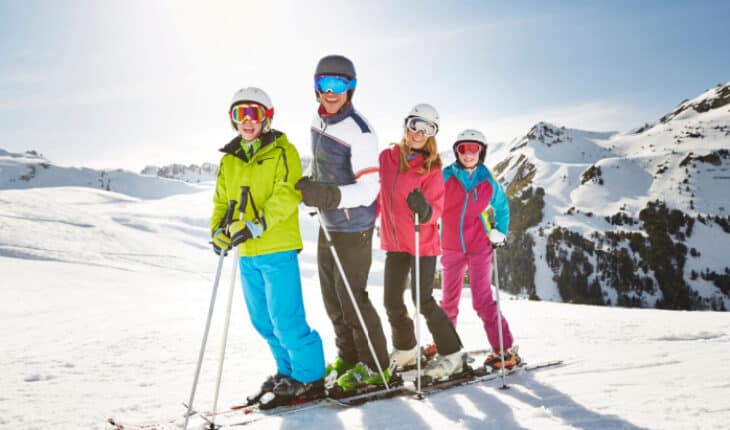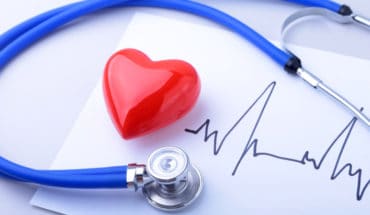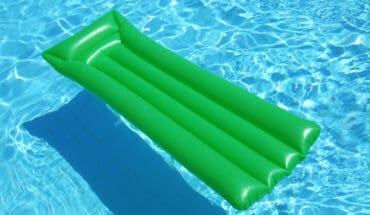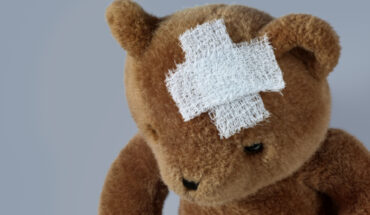Skiing is a great option for a fun and active family holiday however the adrenaline rush is not without risks! Here are some tips to ensure you stay as safe as possible, keeping everyone warm, happy and healthy and some practical first aid tips should things go wrong.
Prevention is key and it is vital to ensure you set off everyday with the best possible, properly fitted kit that is comfortable, appropriate for the weather conditions and in good condition.
Bindings and Boots
Ensure you give accurate information on your age, ability, height and weight as these are critical to calculate the right settings for the bindings of your skis.
Incorrectly adjusted ski bindings account for most leg and knee injuries. If your bindings are too tight and you fall, your skis will not detach, and this can result in very serious injuries. Conversely if your bindings are too loose your skis may fall off, which can also lead to injury.
Ensure your boots are comfortable and fit well. Do not do them up too tight. If you find that your feet get very cold or lose sensation, try slightly loosening the fastenings as they may be restricting the circulation to your feet.
Be mindful of the weather conditions:
Weather
The weather at altitude can change incredibly fast, so dress for all eventualities. Layers are always best, and the general advice is to choose all synthetic or all natural. Ideally do not mix layers of wool with layers of synthetic fabrics as they work in different ways to keep you warm.
Good gloves and socks are essential.
Weather warnings are often posted at ski lifts, ensure you read signs and take heed of any warnings.
Ice
Ice is slippery and trying to turn on black ice is frightening, and you are unlikely to be able to control your skis. Avoid turning on ice if at all possible, look for powdered snow to help gain traction and control.
Dehydration and Exhaustion
Skiing is a strenuous activity and it is vital that you keep yourself hydrated and not to overdo it. Take regular breaks and sips of water whenever you can. Bring easy-to-eat snacks to munch on the lifts to keep your energy levels up. If you are skiing to another resort, ensure that you have planned the route sufficiently and allowed enough time to get back before the lifts close.
Frostbite
Watch out for unnaturally white patches of skin on the faces of your companions or on your hands as these can be the early signs of frostbite. Be aware if your skin becomes numb and take time out early to warm through.
Take regular breaks and thaw frozen flesh with body heat and massage. Never put frostbitten hands or feet in hot water or on radiators or hot water bottles.
Sunburn
Ice and snow add considerably to the power of the sun and it is possible to burn quickly even on a cloudy day. Cover all exposed areas with a high factor sun cream and ensure you have good quality sunglasses or goggles. Ensure you apply regular lip balm that contains sun protection.
If someone gets sunburnt, once you get back to base run the area under tepid water and apply neat Aloe Vera. They should be seen by a doctor if they appear unwell.
Avoiding Collisions
Ski to your level of competence – do not be tempted to go at a faster pace than you are comfortable with and moderate your speed according to visibility and the quality of the snow. Always ski at a pace when you are in control.
The International Ski Federation (FIS) has developed ‘Rules of Conduct’ that apply to all who use the piste, regardless of what equipment they are using – whether on skis or boards. This ‘highway code’ for the snow helps everyone stay safe on the slopes and should be followed at all times. These Rules are posted outside ski schools, by ski lifts and often printed on the back of piste maps. They should be read by everyone before venturing onto the slopes.
Be aware of your surroundings. People go very fast and although you may be in control, others may not!
Always look uphill before setting off.
Wear a helmet to protect your head, you and others will be going at speed, it can also protect you from ski poles, skis and hitting your head on the chair lifts.
First Aid Following an Accident
Danger –
be aware of the surroundings and do not put yourself at risk.
- Check it is safe before crossing the piste to help
- Secure the accident area
- Protect with crossed skis or planted snowboard above the injured person.
- If necessary, position someone prominently at the top of the slope to warn people about the accident
- Get help! Emergency numbers are printed on most piste maps or at ski schools and you should note them down when buying your lift pass. Always start the day with a fully charged phone. Carry an additional charged battery pack.
Response –
are they conscious? If so, check if they need your help.
If they are unresponsive
Airway –
check nothing obvious is obstructing their airway.
Breathing –
check for breathing.
If they are breathing, very carefully put them in the recovery position – keep checking they are still breathing. Roll them onto a foil blanket or something to insulate them from the school if at all possible.
If they are not breathing, start CPR.
Circulation –
cover any wounds and apply direct firm pressure to stop them bleeding. Hypothermia makes it more difficult for blood to clot, conserve their body heat and insulate them from the cold.
- Ideally have a foil blanket with you as part of your first aid kit.
- Do not reposition limbs you think could be broken, unless there is immediate concern about the circulation to the lower part of the limb.
- Keep the casualty safe and warm.
- Do not give them anything to eat or drink, especially not alcohol. Avoid moving them (unless it is absolutely necessary) if there is any risk of a spinal injury and do not remove their ski helmet.
Alert the rescue services
The telephone number is normally on the piste map.
Let the rescue services know:
- where the location of the accident is (piste name and nearest piste marker)
- the number of people injured
- what type of injury it is
Establish the facts of a serious accident
- Names and addresses of people involved as well as witnesses.
- Place, time and circumstances of accident.
- Terrain, snow conditions and visibility.
- Markings and signs.
- What parents need to know about Scarlet Fever & Strep A - 9th December 2024
- Heart Attacks and Cardiac Arrests – What’s the Difference? - 22nd October 2024
- High blood pressure and how to reduce it - 8th September 2024






